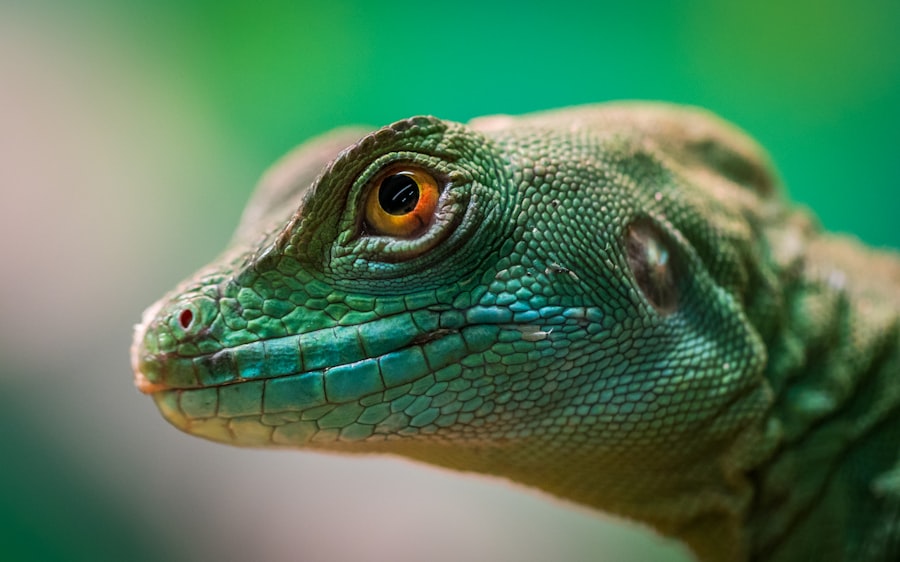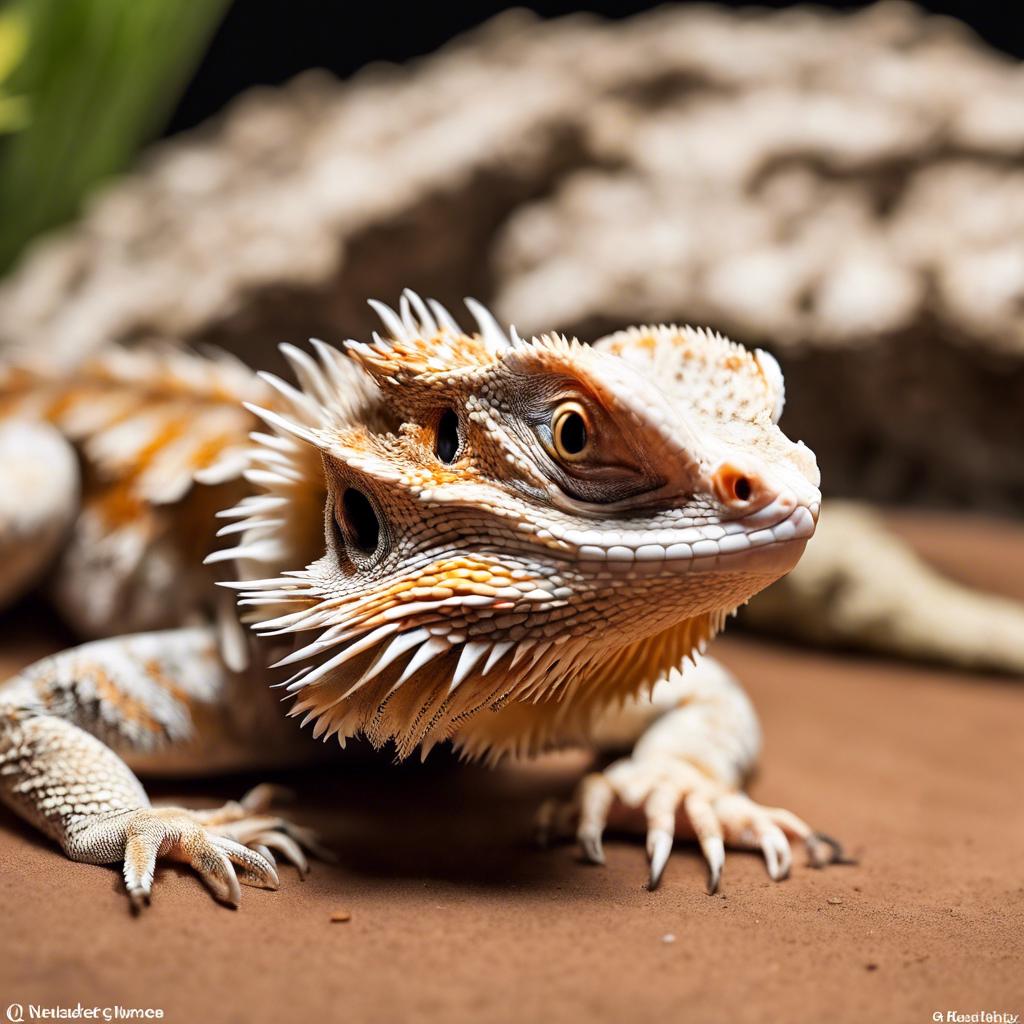Bearded dragons are popular reptile pets known for their unique appearance and docile nature. These fascinating creatures require proper care and a suitable habitat to thrive. As a responsible pet owner, it is crucial to understand the needs of your bearded dragon and provide them with the best possible care.
One of the most important aspects of bearded dragon care is creating a suitable habitat. This includes providing the right temperature, lighting, and humidity levels, as well as choosing the appropriate substrate for their enclosure. The substrate, or bedding, plays a crucial role in maintaining the overall health and well-being of your bearded dragon.
Key Takeaways
- Loose substrate is an important aspect of bearded dragon care.
- Choosing the right loose substrate is crucial for the health of your bearded dragon.
- Sand is a popular but controversial loose substrate option for bearded dragons.
- Alternatives to sand include reptile carpet, paper towels, and tile.
- Proper cleaning and maintenance of loose substrate is essential to avoid health issues for your bearded dragon.
Importance of Loose Substrate for Bearded Dragons
Loose substrate refers to the bedding material that lines the bottom of your bearded dragon's enclosure. It is important to use loose substrate rather than solid flooring for several reasons. Firstly, loose substrate allows your bearded dragon to exhibit natural behaviors such as digging and burrowing. This helps to stimulate their natural instincts and provides mental stimulation.
Secondly, loose substrate helps to maintain proper humidity levels in the enclosure. Bearded dragons require a certain level of humidity to stay hydrated and shed their skin properly. Loose substrate can help retain moisture and prevent the enclosure from becoming too dry.
Lastly, loose substrate provides a comfortable surface for your bearded dragon to walk on. Solid flooring can be hard on their joints and may cause discomfort or injury over time. Loose substrate allows them to move around more freely and reduces the risk of foot or leg problems.
Factors to Consider When Choosing Loose Substrate
When choosing the right type of loose substrate for your bearded dragon, there are several factors to consider. Firstly, you need to take into account your bearded dragon's age, size, and behavior. Younger dragons may require a finer substrate that is easier for them to navigate, while larger dragons may benefit from a coarser substrate that allows for better digging and burrowing.
You also need to consider the ease of cleaning and maintenance. Some substrates may be more difficult to clean or may require frequent replacement, which can be time-consuming and costly. Additionally, you should consider the availability and cost of the substrate, as well as any potential health risks associated with its use.
Best Loose Substrate Options for Bearded Dragons
There are several loose substrate options available for bearded dragons, each with its own benefits and drawbacks. One popular option is reptile carpet, which is a synthetic material that mimics the texture of natural grass. Reptile carpet is easy to clean and maintain, but it may not provide the same level of stimulation or comfort as other substrates.
Another option is paper towels or newspaper, which are inexpensive and easy to replace. However, they do not provide the same level of naturalistic environment as other substrates and may not be suitable for long-term use.
Another popular choice is coconut fiber or coconut husk, also known as eco earth. This substrate is made from the fibrous husk of coconuts and provides a naturalistic environment for your bearded dragon. It retains moisture well and allows for digging and burrowing. However, it can be messy and may require frequent replacement.
Sand as a Loose Substrate: Pros and Cons
Sand is a controversial substrate option for bearded dragons. While it can provide a naturalistic environment and allow for digging and burrowing, there are several drawbacks to using sand as a substrate.
One of the main concerns with sand is impaction, which occurs when your bearded dragon ingests the substrate while eating or accidentally while exploring their enclosure. This can lead to blockages in their digestive system, which can be life-threatening if not treated promptly.
Another concern is the risk of respiratory issues. Fine sand particles can become airborne and be inhaled by your bearded dragon, leading to respiratory irritation or infection.
Despite these risks, some pet owners choose to use sand as a substrate for their bearded dragons. If you decide to use sand, it is important to choose a coarse, non-toxic sand specifically made for reptile enclosures. You should also monitor your bearded dragon closely for any signs of impaction or respiratory issues and seek veterinary care if necessary.
Alternatives to Sand for Bearded Dragon Substrate

If you are concerned about the risks associated with sand, there are several alternative loose substrate options available for bearded dragons.
One option is reptile bark or mulch, which is made from shredded bark or wood chips. This substrate provides a naturalistic environment and allows for digging and burrowing. It retains moisture well and is easy to clean. However, it may not be suitable for younger dragons or those prone to eating substrate.
Another option is reptile soil or topsoil, which is a mixture of organic materials such as peat moss and coconut fiber. This substrate provides a naturalistic environment and retains moisture well. It allows for digging and burrowing and is easy to clean. However, it may require frequent replacement and can be messy.
How to Properly Clean and Maintain Loose Substrate
Proper cleaning and maintenance of loose substrate is essential for the health and well-being of your bearded dragon. Regular cleaning helps to prevent the buildup of bacteria, fungi, and parasites that can cause health issues.
To clean loose substrate, start by removing any visible waste or soiled areas with a scoop or tongs. Next, spot clean the enclosure by removing any uneaten food or shed skin. Finally, replace a portion of the substrate every few weeks to maintain cleanliness.
It is also important to regularly disinfect the enclosure to kill any remaining bacteria or parasites. Use a reptile-safe disinfectant and follow the instructions carefully. Allow the enclosure to dry completely before adding fresh substrate.
Health Issues Associated with Loose Substrate and How to Avoid Them
While loose substrate can provide a naturalistic environment for your bearded dragon, it is important to be aware of the potential health issues that can arise from its use.
One of the main concerns is impaction, which occurs when your bearded dragon ingests the substrate and it becomes lodged in their digestive system. To avoid impaction, it is important to choose a substrate that is not easily ingested and to monitor your bearded dragon closely for any signs of digestive issues.
Another concern is respiratory issues, which can occur if your bearded dragon inhales fine particles of substrate. To avoid respiratory issues, choose a substrate that does not produce a lot of dust and ensure proper ventilation in the enclosure.
It is also important to regularly clean and maintain the substrate to prevent the buildup of bacteria, fungi, and parasites. Regular spot cleaning and substrate replacement can help reduce the risk of these health issues.
Common Mistakes to Avoid When Using Loose Substrate
When using loose substrate for your bearded dragon, there are several common mistakes that pet owners should avoid.
One common mistake is using a substrate that is too fine or dusty. Fine substrates can easily be ingested or inhaled by your bearded dragon, leading to impaction or respiratory issues. Choose a substrate that is coarse and does not produce a lot of dust.
Another mistake is using a substrate that is difficult to clean or maintain. Some substrates may require frequent replacement or may be difficult to spot clean. Choose a substrate that is easy to clean and maintain to ensure the health and well-being of your bearded dragon.
Lastly, it is important to avoid overcrowding the enclosure with too much loose substrate. Bearded dragons need space to move around and exercise, and too much substrate can limit their mobility. Provide a sufficient amount of substrate for digging and burrowing, but avoid excessive amounts.
Choosing the Best Loose Substrate for Your Bearded Dragon
In conclusion, choosing the right loose substrate for your bearded dragon is crucial for their overall health and well-being. Consider factors such as your bearded dragon's age, size, and behavior when choosing the substrate. Take into account the ease of cleaning and maintenance, as well as any potential health risks associated with its use.
While sand is a popular choice for bearded dragon substrate, it comes with certain risks such as impaction and respiratory issues. Consider alternative substrates such as reptile carpet, paper towels, coconut fiber, reptile bark, or reptile soil.
Remember to regularly clean and maintain the substrate to prevent the buildup of bacteria, fungi, and parasites. Avoid common mistakes such as using a substrate that is too fine or dusty, difficult to clean or maintain, or overcrowding the enclosure with excessive amounts of substrate.
By providing a suitable habitat with the right loose substrate, you can ensure the health and happiness of your bearded dragon.
If you're looking for the best loose substrate for your bearded dragon, you may also be interested in learning about what foods are safe for them to eat. In a recent article on Reptile Wizard, they discuss whether bearded dragons can eat black beans. It's important to provide a balanced diet for your pet, and understanding what foods are suitable is crucial. To find out more about this topic, check out the article “Can Bearded Dragons Eat Black Beans?”
FAQs
What is a loose substrate?
A loose substrate is a type of bedding material that is not compacted or tightly packed. It is used in reptile enclosures to mimic the natural environment of the animal.
Why is substrate important for bearded dragons?
Substrate is important for bearded dragons because it provides a comfortable and natural environment for them to live in. It also helps to maintain proper humidity levels and allows for natural behaviors such as digging and burrowing.
What are the best types of loose substrate for bearded dragons?
The best types of loose substrate for bearded dragons include reptile carpet, paper towels, ceramic tiles, and organic substrates such as coconut coir, cypress mulch, and orchid bark.
What are the pros and cons of using reptile carpet as substrate?
The pros of using reptile carpet as substrate include easy cleaning, no risk of impaction, and it is reusable. The cons include it not being as natural as other substrates and it may need to be replaced more frequently.
What are the pros and cons of using organic substrates such as coconut coir, cypress mulch, and orchid bark?
The pros of using organic substrates include being more natural for the bearded dragon, allowing for digging and burrowing, and maintaining proper humidity levels. The cons include the risk of impaction if ingested and the need for more frequent cleaning and replacement.
Can sand be used as substrate for bearded dragons?
Sand is not recommended as substrate for bearded dragons as it can cause impaction if ingested. It is also not a natural substrate for them in the wild.

